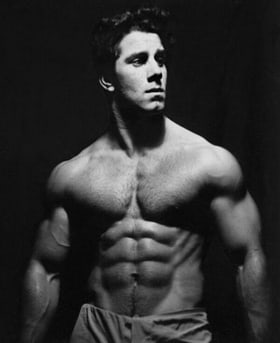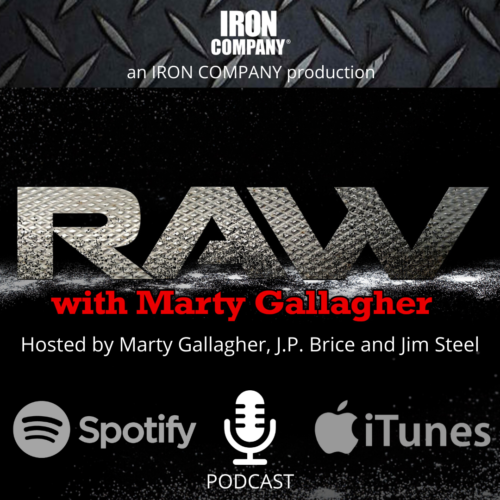
Fitness over 40, 50, 60 and 70
Become a better version of your current self through fitness at any age.
Like a sculptor or a blacksmith, we renovate the soft machine through fitness one savage workout at a time
Very early on I fell in love with fitness and the idea that the human body could be shaped and molded, renovated and improved upon. The idea, that the body could be transformed, from what it was into what you wanted it to become, appealed to me mightily. Forced evolution. I obtained my fitness transformative tool, the barbell, at age 11. Like Vulcan at his forge, I commenced training, hammering away with unfocused psycho intensity. My preteen plan was to train all day every day and eventually emerge from the iron woodshed into plain public view: full-blown, transformed and magnificent, from normal into abnormal, from mortal into immortal. I hammered away mindlessly, without guidance, for nearly two years. At age 13, I discovered the Muscle Magazines.
My iron fitness inspiration was renewed monthly when I would greedily scoop up the latest batch of muscle magazines. My body transformation obsession started with comics and comic book heroes. Every Sunday after church my father would drive to the local newsstand, an anachronism from a bygone era. At the newsstand there were all types and kinds of newspapers and magazines. Kids comics were on the ground floor shelves. Daily newspapers were displayed in the front window and cigarettes, cigars and hard candy set behind the counter.
My dad was an intellectual and a deep thinker. Every Sunday he would stop off at the newsstand for an hour, purchase his newspapers and talk with Alex, the 75-year old WWI trench warfare veteran. My father had been a Sergeant (chemical warfare division) and was in the 4th wave on D-Day. He campaigned all over Europe in WWII. The two warfighters would talk to one another in hushed tones while my brother and I sat on the dusty floor and had our pick of any comic book you could think of. We’d be there a solid hour so I could burn through a lot of comics. When we left my dad always bought my brother and I two comic books (35-cents) each.
Comic books turned me into a facile, enthused reader. I also developed an appreciation of the comic book physiques of Aquaman, Green Lantern, Superman, Batman, etc. I also noted the Charles Atlas Dynamic Tension ads in every comic book, though his physique was nothing I aspired to. By the time I turned 13, I had been lifting my 110-pound weight set for a few years. It was only natural for me to start reading the readily available muscle magazines that sat on the next shelf up at the newsstand.
I began to read fitness mags like Strength & Health, Muscle Builder and Iron Man. A few years later new mags appeared, Muscular Development and All-American Athlete. The muscle mags were visual, the inspiration came from seeing the incredible bodies, the stunning physiques of these otherworldly humans. The mags featured bodybuilders, powerlifters, Olympic lifters, pro athletes and strength athletes. The inspirational photos led me to study the actual fitness training routines the featured athletes used in order to transform themselves into physical Gods.
Feature fitness articles would highlight the athlete’s accomplishments, provide biographical information and always include detailed training information. I would memorize the training program that enabled Bill Pearl to build his mass. I would use Norbert Schmansky’s Olympic press workout or Pat Casey’s exact bench press routine. My poundage was a quarter of what the champs were using - but no matter, I learned and used the exact routines of these Iron Immortals. As a 14-year old I could recite Reg Park’s arm routine or Waldemar Bazanowski’s clean & jerk regimen.

Those primal lessons formed a perfect foundation for all my later efforts. I also developed a broadness lacking in most modern resistance trainers. We practiced three distinctly different forms of weight training: Olympic weightlifting, powerlifting and bodybuilding.
The Olympic lifts gave me explosive power and improved my athletic abilities; the powerlifting provided me brute force and incomparable muscle size. Bodybuilding, with its broad range of exercises, (high volume/moderate payloads) “filled in the gaps” and “rounded out” my physique, to use a Mac McCallum phrase.
For three straight decades I had a continual upward rise in my performance. My strength Bell Curve peaked in my 30's stayed high all through my forties, it leveled off and stayed constant for five years before starting a slow, gradual strength degradation in my fifties.
I felt surprisingly strong in my sixties (450 raw squat ((age-group national record)) 550 deadlift, 205 body weight, Age 65) My raw strength nowadays, at age 70, approximates the strength level I had at age 16. I was a national teenage champion at age 16. Will I be as strong as I was at age 14 when I am 80? I’d take that – since I was squatting 350 at age 14.
Entering my seventh decade, my transformative battle is still raging. I am still fired up and still in hot pursuit of new and exciting transformative goals. Best of all, if I do everything right, I still obtain tangible, measurable improvements in physique and performance. I still have the ability to improve on my current physical and psychological self.
While I have long understood that my all-time glory days are long gone, I still find ways to motivate myself. Most men lose motivation as they age. They quit, or train with half-ass effort. Those that cling to comparing their elder selves to their younger selves are looking for an excuse to quit the quest. I know many of my iron brothers that could not accept (psychologically) the natural decline in performance that comes with aging. So, they quit all training altogether.
I had no problem with my loss in poundage-handling capability. I do not miss squatting 845 or deadlifting 745. I am thrilled to have 50% of my all-time capacity. My greatest consolation is in knowing that, in relation to my age-group, I am still in the top 1%. A lifetime of consistent hardcore weight training has revamped my body and made me resilient and hardy.
My modern goal, one I find highly motivating and continually motivating, is the idea that I can improve upon my current self. I can improve the current state of my body and I can improve my current levels of performance. I can improve upon who I am today.
I improve through the skillful manipulation of progressive resistance training, cardiovascular training and nutrition. These three fitness disciplines are independent, yet interdependent. They are pursued individually and have a synergistic effect: each amplifies the other if done simultaneously. By routinely changing techniques, modes and methods, progress can continually be coaxed.
The body will not alter itself, improve itself, i.e. add lean muscle, oxidize body fat, in response to anything less than herculean effort and disciplined eating; ease and sameness, mildness, doing the familiar, is insufficient. Doing the same things in the same ways does nothing physiologically. How could it? At best you are engaged in a maintenance program, treading water.
The human body can only build muscle and/or melt fat in response to intense training underpinned with precision nutrition. Mild changes do not produce spectacular results. In training, in every session, in every exercise or drill, I strive to attain 100% (or more) of capacity on that day and at that time.
Regardless if my capacity on a particular day is enhanced or diminished, my progressive resistance goal is to rep until I cannot perform another rep. Do so, and I know I have given 100%. Squeeze out an extra rep, add 5-10 pounds to the exercise poundage and I’ve given 102%. Assuming your techniques are correct and consistent, the only way you add poundage or squeeze out more reps is by exceeding current capacities. That degree of effort invariably triggers the Adaptive Response.
Anyone can work to 100% of capacity safely and consistently. A person does not have to attempt a rep that they know they have no chance of completing. No need to fail with a rep. Staying within the precise technical boundaries of a lift keeps the lifter safe. I only go all out on the top set (or static sets) of an exercise. The athlete pushes or pulls on the top set poundage until another rep is not possible. I do this safely and routinely.
The ability to work at the cusp of our current fitness capacities, consistently and safely, is the real secret to successful progressive resistance training. Get your goals straight, i.e. fall in love with the idea of improving on your current self. Learn to train hard and learn how to exert 100% safely. Synchronize intense cardio with hardcore resistance training and underpin with precision nutrition. By obtaining intense psychological satisfaction from improving on the current version of ourselves, we create a never-ending source of transformative motivation.
For all your fitness equipment needs including cardio equipment, rubber gym flooring, free weight equipment, strength training equipment and more please visit IRON COMPANY.
About the Author
As an athlete Marty Gallagher is a national and world champion in Olympic lifting and powerlifting. He was a world champion team coach in 1991 and coached Black's Gym to five national team titles. He's also coached some of the strongest men on the planet including Kirk Karwoski when he completed his world record 1,003 lb. squat. Today he teaches the US Secret Service and Tier 1 Spec Ops on how to maximize their strength in minimal time. As a writer since 1978 he’s written for Powerlifting USA, Milo, Flex Magazine, Muscle & Fitness, Prime Fitness, Washington Post, Dragon Door and now IRON COMPANY. He’s also the author of multiple books including Purposeful Primitive, Strong Medicine, Ed Coan’s book “Coan, The Man, the Myth, the Method" and numerous others. Read the Marty Gallagher biography here.


